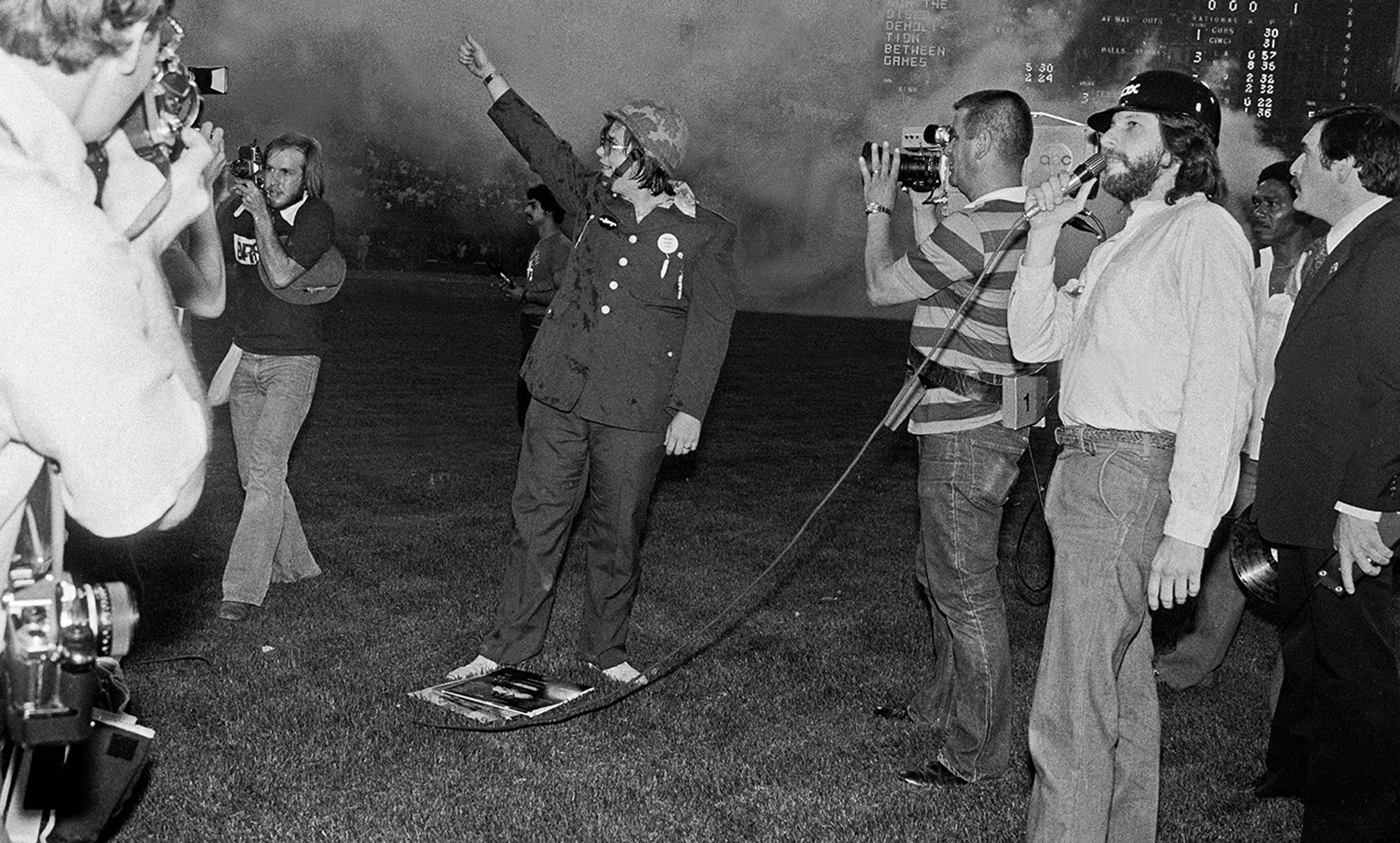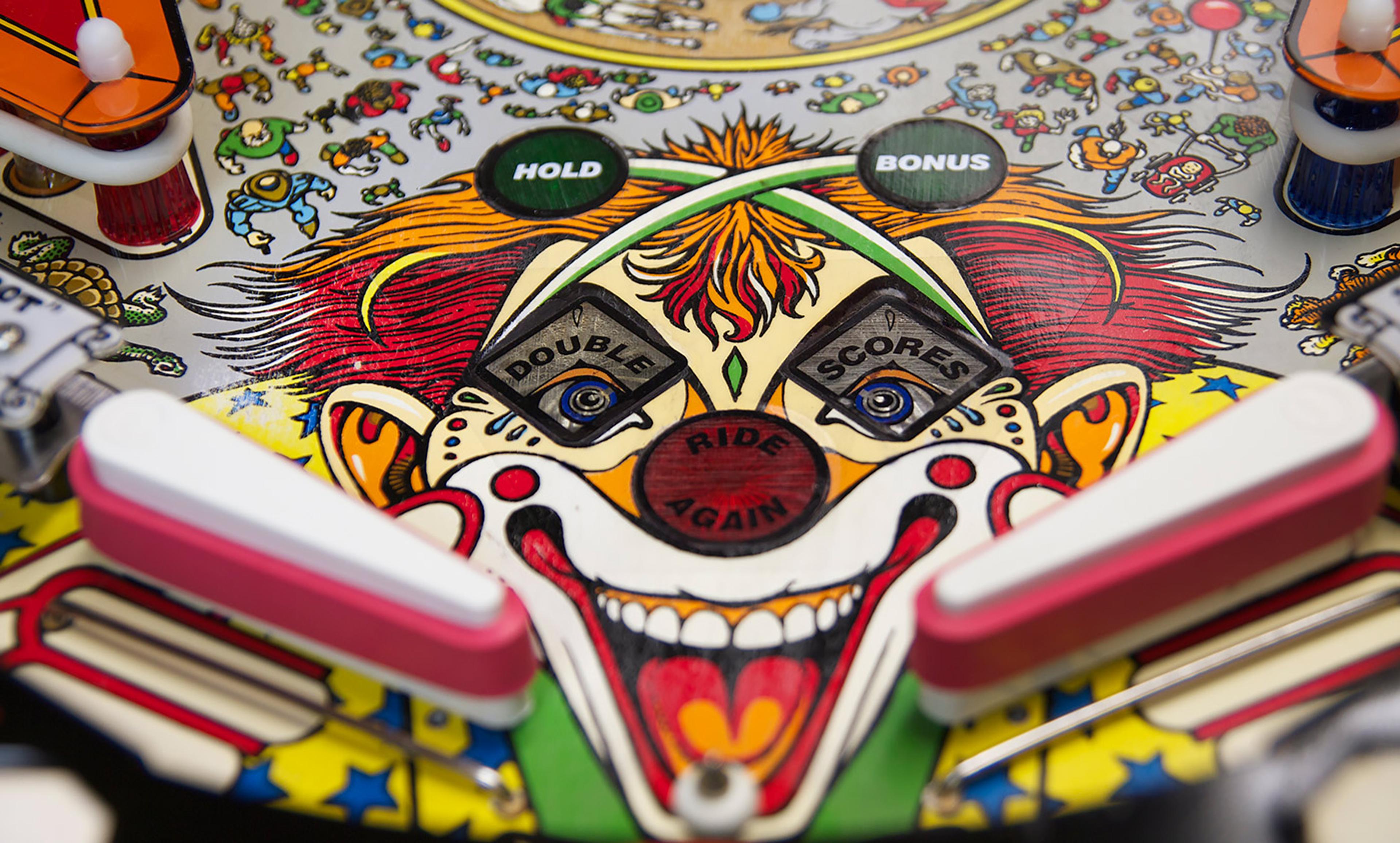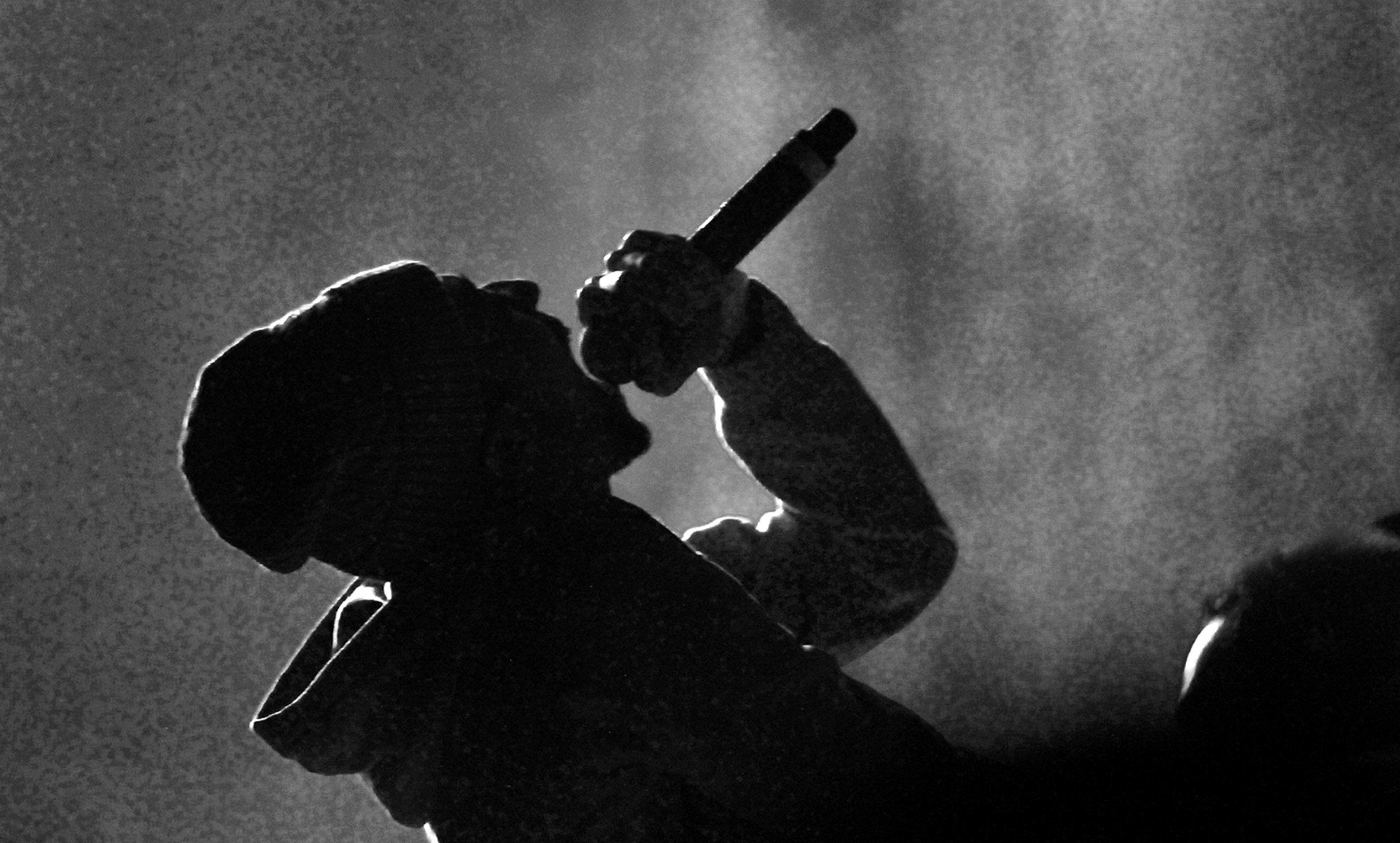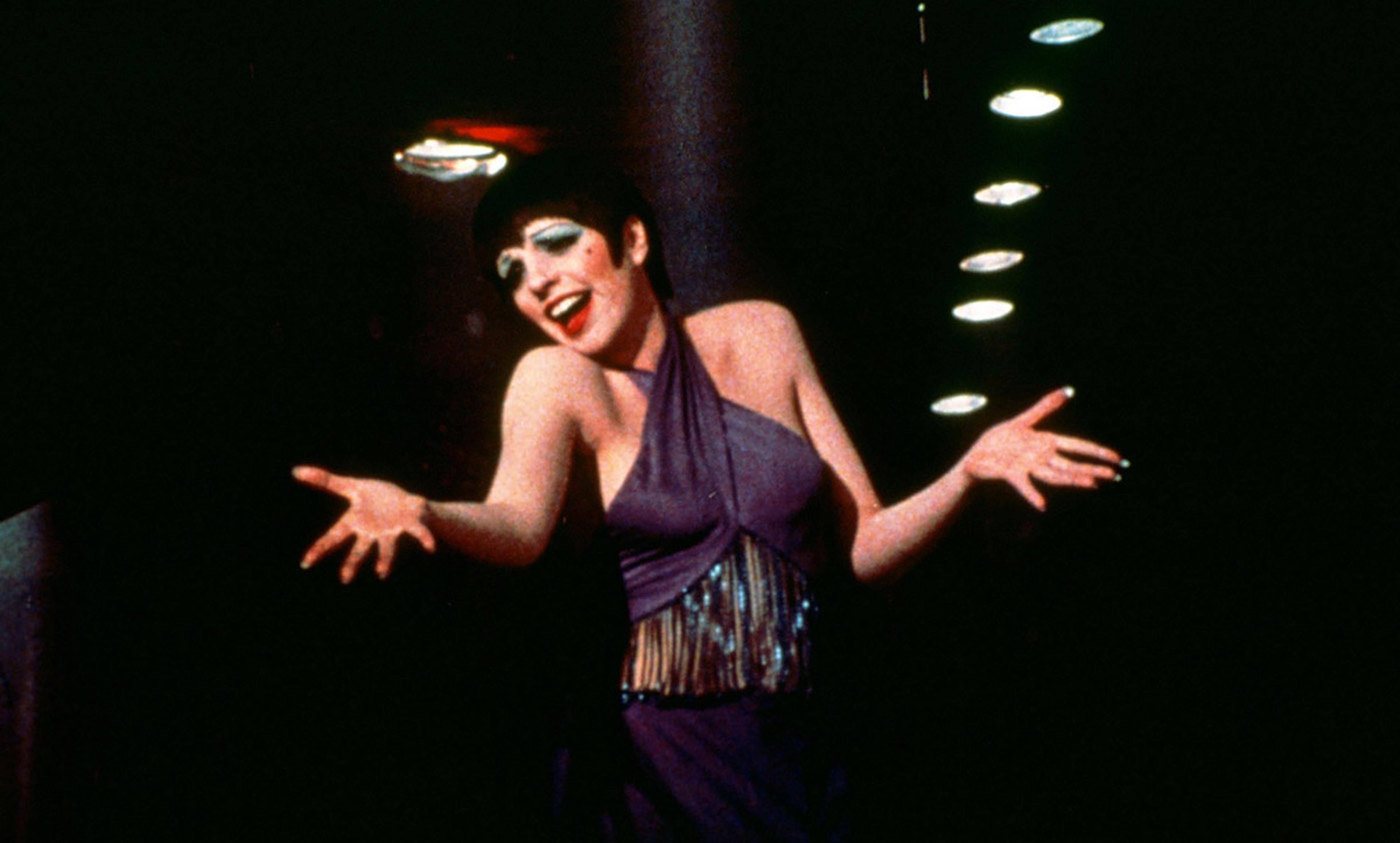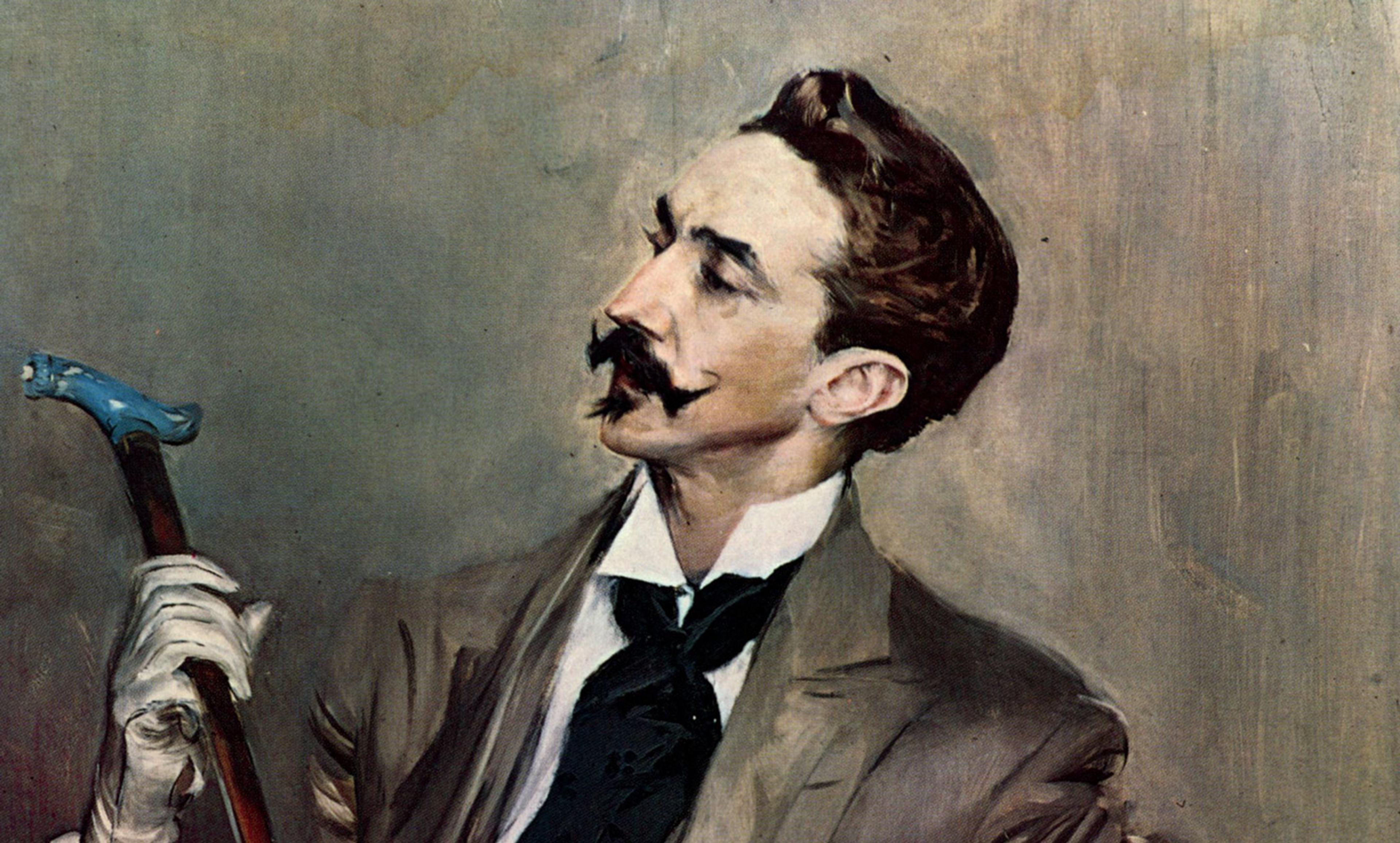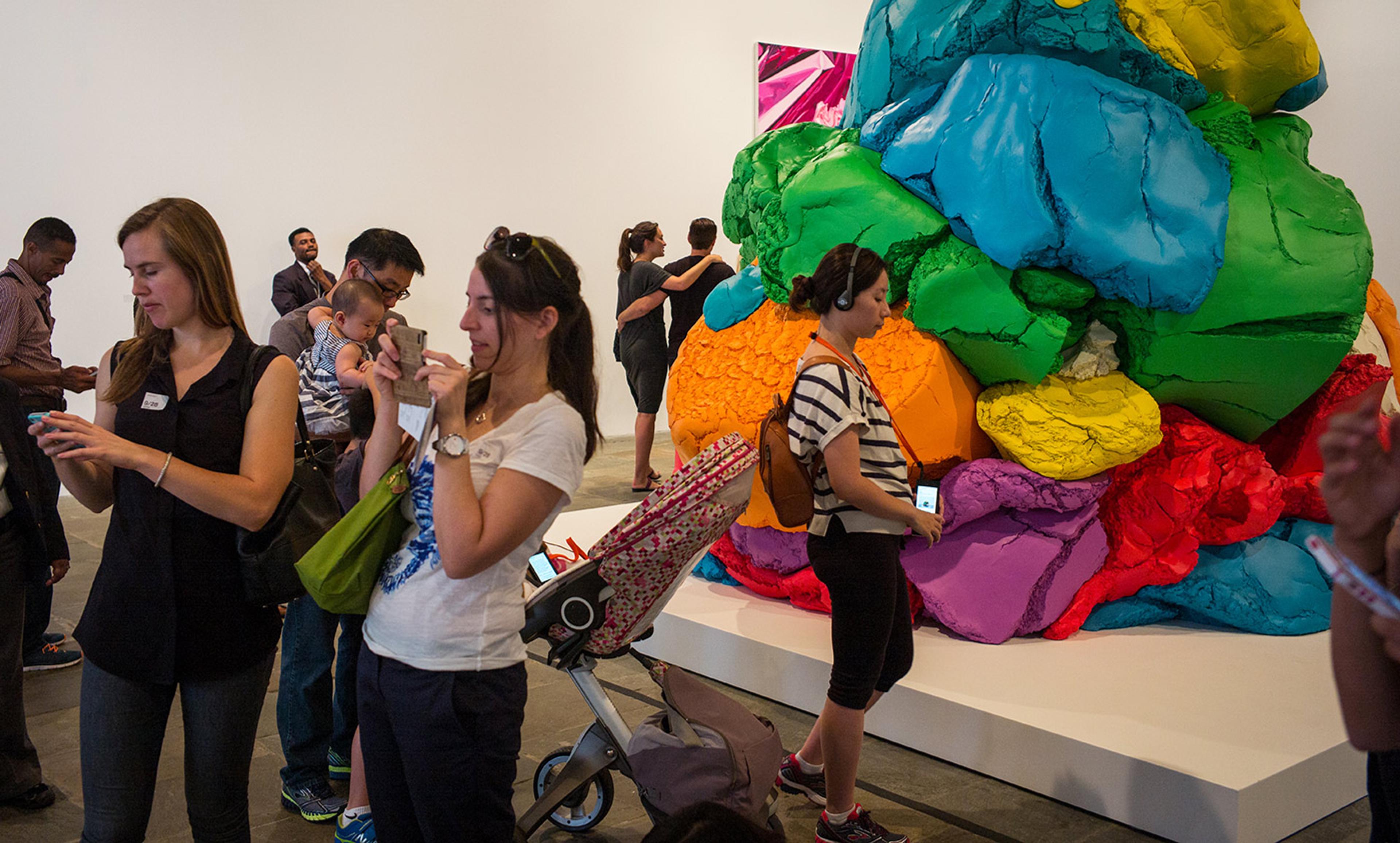DJ Steve Dahl during Disco Demolition at Comiskey Park, Chicago, Illinois, 12 July 1979. Photo by Paul Natkin/Getty Images
‘This wouldn’t have happened if they had country and western night.’
Richard Wortham, White Sox pitcher
It was a muggy summer night in South Side, Chicago in 1979. In and around Comiskey Park, home to the long-struggling White Sox baseball team, the scene was one of total chaos. Thousands of working- and middle-class young men, predominately white, predominately angry, went riot. Seats were ripped out of the stadium, urinals were kicked from the walls, and the opposing baseball teams were shut in the locker rooms for their own protection. Through it all, the rioters shouted a mantra. It wasn’t about inequality, lingering recession woes or the high-paying industrial jobs slowly seeping out of the Midwest. The slogan they chanted over and over, until their voices were raw, was: ‘Disco sucks!’
That summer, disco music was everywhere, saturating pop culture at the expense of almost all other genres of music. With its pulsing ‘four-on-the-floor’ beat, big vocals and affirming lyrics, disco was a shiny, upbeat escape for Americans living through the smoggy, cynical late-1970s. By the end of the decade, it had become as common as good old American apple pie – there were discotheques in most decently sized towns. Midwestern teenagers skated to Stayin’ Alive in roller discos, and many mainstream radio stations changed their programing to all-disco, all the time.
Disco hadn’t always been so mainstream. It evolved in the clubs and bars of communities that were historically marginalised by the straight, white majority. ‘Disco music was black music, basically,’ John-Manuel Andriote, author of Hot Stuff: A Brief History of Disco/Dance Music (2001), told me. ‘It was mostly recorded by black artists until the mid- to late-1970s, when white artists realised how popular the music had become. Back then, people heard new dance music in the clubs – not on the radio (at first) – so club DJs played a big role in introducing these black and Latino sounds to a bigger public.’
The gay community, its nightlife flourishing after the liberating Stonewall riots in 1969, embraced disco music and its pioneering DJs. ‘The group most responsible for keeping discos alive was the homosexual community,’ the sound engineer Alex Rosner told Newsweek in 1976. ‘The pioneering done in the disco field has been done by gays, with blacks and Puerto Ricans following … The common denominator there is oppression.’
By the mid-1970s, disco was catching on, and creating its own mainstream stars, such as Gloria Gaynor and Donna Summer. But it was Saturday Night Fever (1977), the movie featuring a glamorous, dancing, ladies’ man played by John Travolta – and its accompanying disco soundtrack by the high-pitched Bee Gees – that made disco a nationwide phenomenon. ‘The Bee Gees put a white face on what was basically black and Latin music, and it exploded in popularity,’ Andriote says.
One of the victims of the disco explosion was Steve Dahl, then a 24-year-old Chicago radio DJ who pioneered the ‘shock-jock’ persona most identified with Howard Stern. In December 1978, he was fired from WDAI, ‘Chicago’s best rock’ station, when it switched to an all-disco format. Dahl soon found a home at the rock station the Loop 97.9, but he carried a grudge.
Built like the proverbial Pillsbury doughboy, Dahl brought with him a legion of young, alienated male listeners he named ‘The Insane Coho Lips’. Dahl and his posse greeted each other on-air with the salutation: ‘Disco sucks!’
‘If anything, the pushback from disco saturation was an act of self-preservation,’ Dahl would later write in Disco Demolition: The Night Disco Died (2016). ‘No kid, just figuring out who he was and where he was going, would be prepared to have his assimilated rock-and-roll identity stripped from him. If the resistance was furious, it was because they were not prepared to shuck the rock and roll, which had sheltered them in their transition from kid to adult.’
Dahl saw disco as slick and inauthentic, and he took to playing popular disco tunes, only to ‘blow ’em up real good’ with sound-effects live on-air. These targeted antics were not isolated to the radio booth. At promotions, Dahl took to performing in a helmet and military jacket, destroying albums on stage. For this complicated, insecure performer, the adulation he received made him feel that he was building a movement – and advancing his career. ‘[My fans] were passionate about their music and their lifestyles,’ Dahl wrote in Disco Demolition. ‘I tapped into it, both as a response to being canned to make room for the disco format, and to build a community so I could keep my job.’
Dahl’s wife Janet took a more nuanced view of her husband’s motivations. ‘He looked goofy and chubby, his hair was bad, and he was breaking records on his head,’ she remembered. ‘But to be embraced was validating for someone like him.’ His fans, often from struggling, working-class Chicago families, lost in a new culture of women’s liberation, black rights, sexual liberation and Studio 54-inspired androgyny and materialism, felt validated right back. ‘I was a chubby kid,’ Kevin Hickey, a fan, recalled. ‘I remember Steve saying the reason he hated disco so much was because he couldn’t buy a three-piece white suit off the rack. That stuck with me because I couldn’t either.’
On 12 July 1979, Dahl would come face-to-face with the community he had created, on a night that became known as ‘Disco Demolition Night’.
That night, the White Sox were scheduled to play a doubleheader against the equally middling Detroit Tigers. As part of a ‘teen night’ promotion with the Loop radio station, fans were told that if they donated one of their disco records, they would be admitted into Comiskey Park for only 98 cents. Between games, Dahl and his cohorts promised to put the records in a giant dumpster at centre field and blow it up, the physical realisation of the audio stunts that Dahl had been pulling for weeks.
Fans flooded the stadium, as ushers struggled to keep up with the number of disco albums being shoved in their faces. One young African-American usher, Vincent Lawrence (who later became a pioneer of house music, disco’s direct descendant), noticed a disturbing trend as he took the albums. ‘A lot of the records were not disco records but BLACK records – Marvin Gaye, Stevie Wonder.’
The first game passed relatively uneventfully, the Tigers winning 4-1. Comiskey Park, often half-empty on game days, was filled past capacity. More than 47,000 people packed into a stadium whose capacity was 44,492. So far, the promotion had been a startling success.
But as soon as Dahl, clad in military fatigues, emerged in a convertible Jeep, the night took a sinister turn. Fans began throwing beers at the Jeep. Even Dahl was momentarily stunned. ‘When the door opened and I saw all those people,’ he remembered, ‘it was: “What the fuck? They are throwing beers and cherry bombs at us. And they’re the people who like us!”’
To chants of ‘Disco sucks!’, Dahl stepped out of the Jeep into centre field and led the crowd in a countdown to the demolition of the albums. But too much dynamite caused album fragments to shoot into the sky, and a crater was formed from the explosion’s impact. The crowd roared, as players continued warming up on the field.
‘The place went bonkers … People started jumping out of the stands,’ D J Michaels, a witness, remembered. ‘It was like the rats leaving a ship. A few, then more, then total chaos.’
Dahl and his team were whisked to safety. Bonfires were started. The White Sox player Steve Trout remembered the scene:
I walked out to look at centre field, and I heard something go by me. It was an album from the upper deck and landed next to my right foot. It was stuck in the ground. I said: ‘Holy shit, I could have been killed by the Village People.’
The White Sox player Ed Farmer got in a fist fight in the parking lot. The Chicago Police Department, including mounted policemen, appeared at the scene. A little more than an hour after it was scheduled to begin, the second game was postponed due to unsafe conditions.
By the time the riot had dissipated, 39 people had been arrested, and the field was smouldering and gutted. For many of the participants, it was an exhilarating experience. ‘We didn’t take over the dean’s office but we took over our ballpark,’ Bob Chicoine, a vendor, remembered.
Almost immediately, the local media latched on to the story and ran with it. Joe Shanahan, a bar owner and native Chicagoan, recalled watching reports of the scene:
I could see the South Side kids I grew up with on the television running over their field. Those were the douchebags I ran away from in high school. And they were burning records. I thought: ‘Didn’t you all read Bradbury? Burning books? Burning records? This has the feeling of a really bad cloud. And why is it coming out of Chicago? And why is music of any kind, whether I like it or not, being destroyed for some radio promotion or some baseball promotion? It gave licence for people to not be in the modern world.
The story soon became nationwide news. Disco was again labelled ‘other’ – foreign and not tough enough for real, heartland American males. Dahl and his cohorts strongly denied (and continue to deny) that the ‘Disco Sucks!’ movement had anything to do with racism or homophobia. ‘I’m worn out from defending myself as a racist homophobe for fronting Disco Demolition at Comiskey Park,’ he wrote in his book. ‘This event was just a moment in time. Not racist, not anti-gay … It is important to me to have this viewed in the 1979 lens … That evening was a declaration of independence from the tyranny of sophistication.’
Disco did not worship at the altar of the rock god. It was the Village People versus Pink Floyd. Andriote agrees: ‘My take on what happened [at Comiskey Park] was that it was a boiling-over of testosterone from white straight men who saw disco – and the whole club scene – as threatening to their masculinity.’
By the early 1980s, disco was beyond passé, and so were all the fanciful accoutrements that went with it – glitter balls, dance lessons and belting divas. Some people point to the events at Comiskey Park as ‘the night disco died’, although over-saturation and mediocre products also helped lead to its rapid downfall. Yet, despite the best efforts of men such as Dahl, disco’s influence lives on. The marginalised groups who loved the music – blacks, women, Hispanics, Latinos and gays – have increasingly claimed their rightful place in society. Disco informs the work of many of today’s superstars, from Bruno Mars to Lady Gaga, and popular music from house to EDM. As the Village People sang: ‘You can’t stop the music, nobody can stop the music.’
